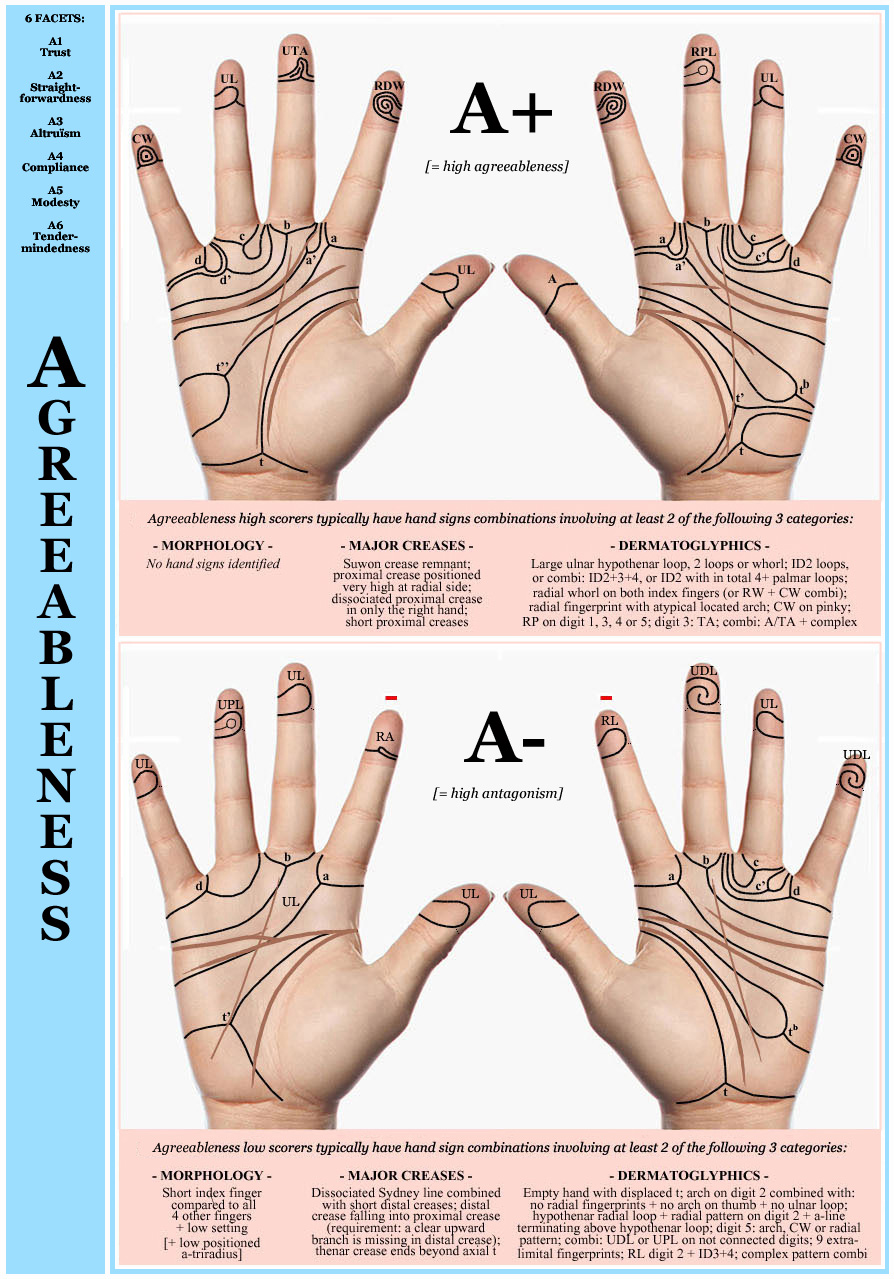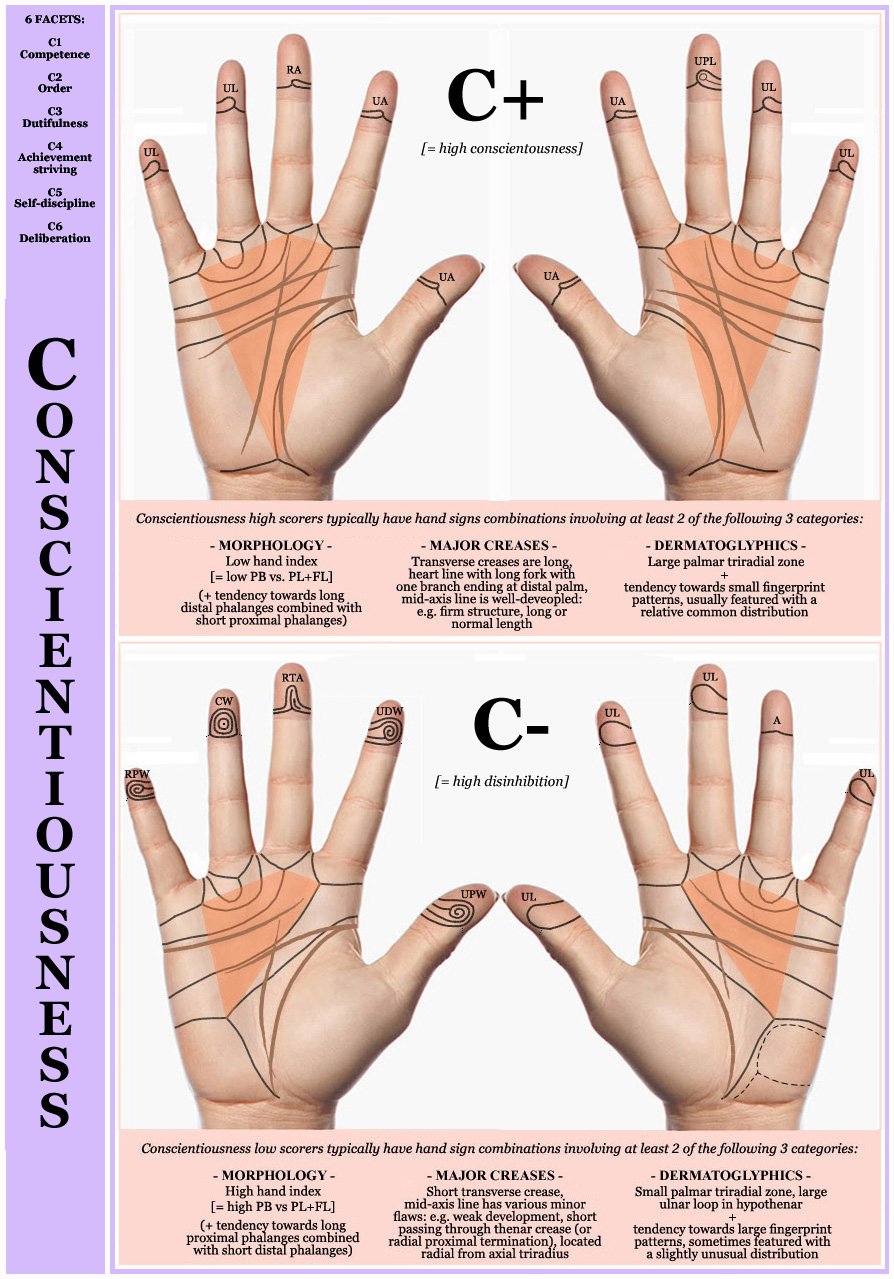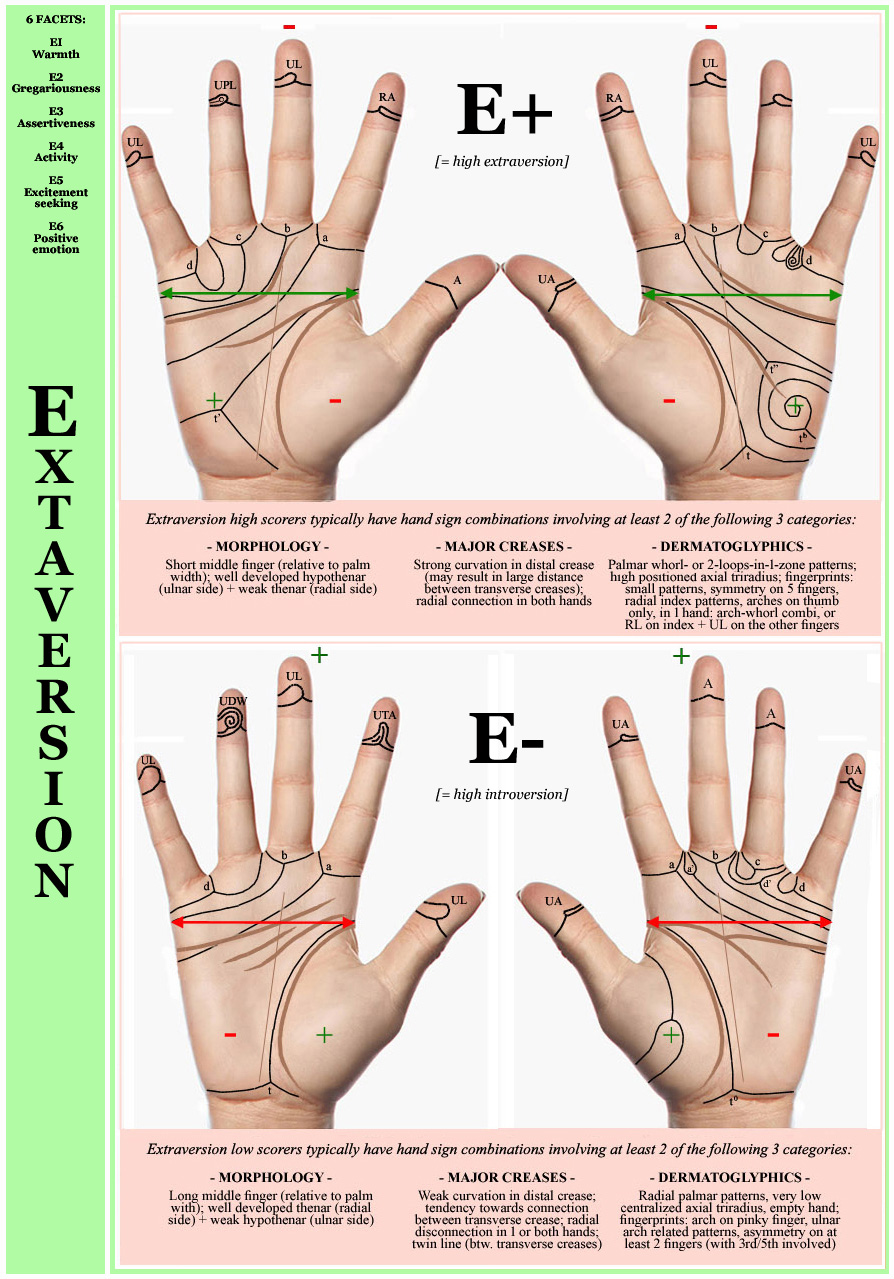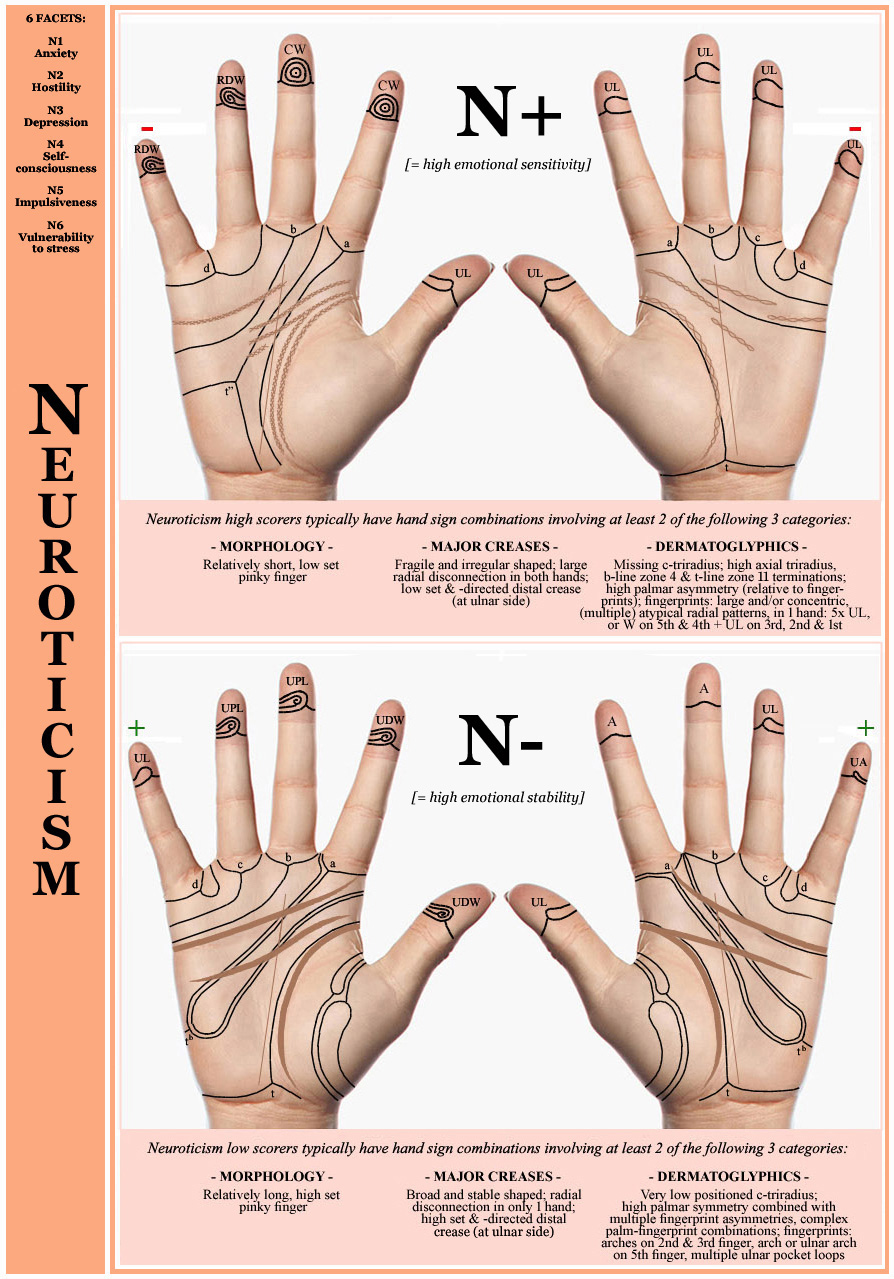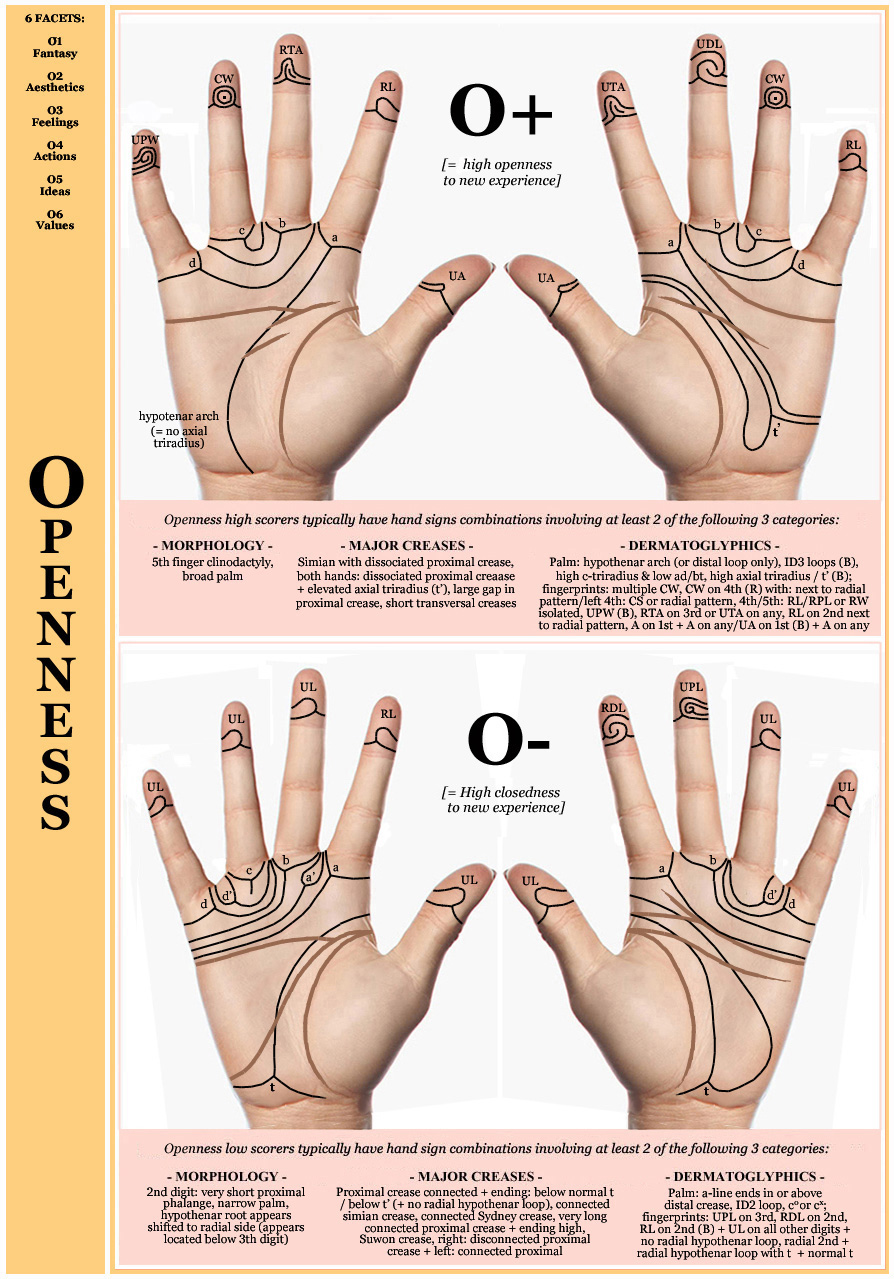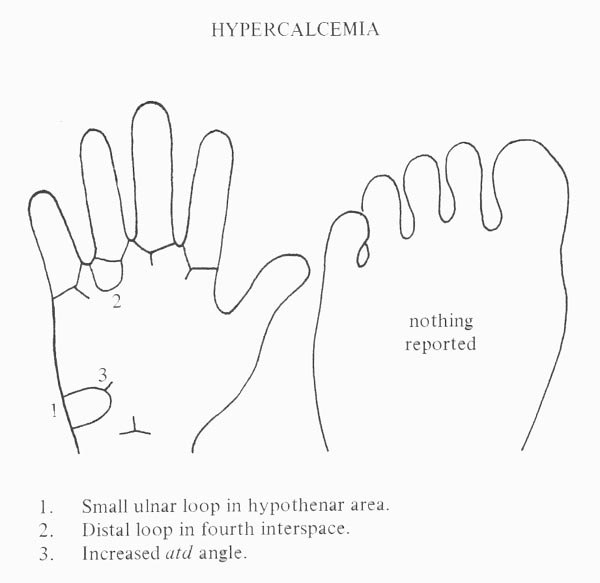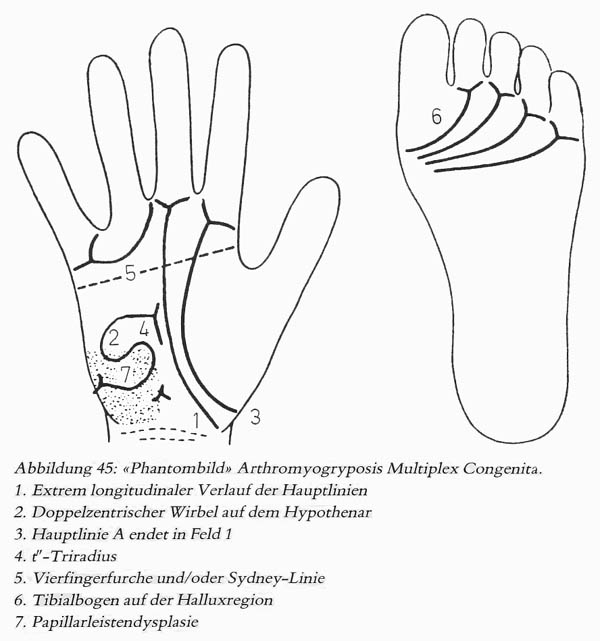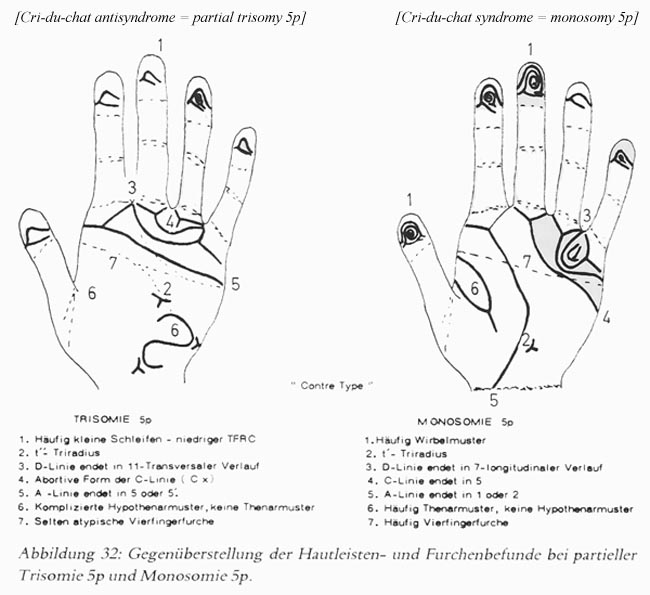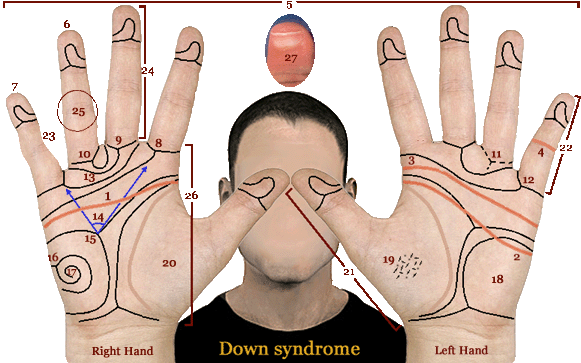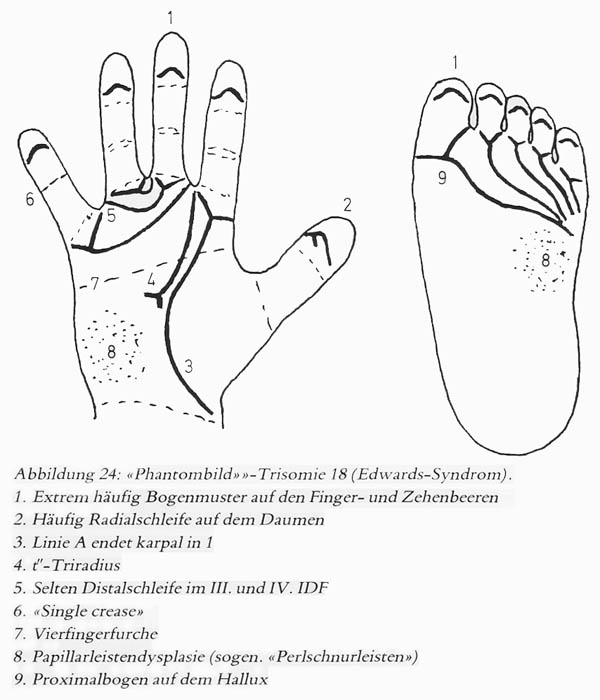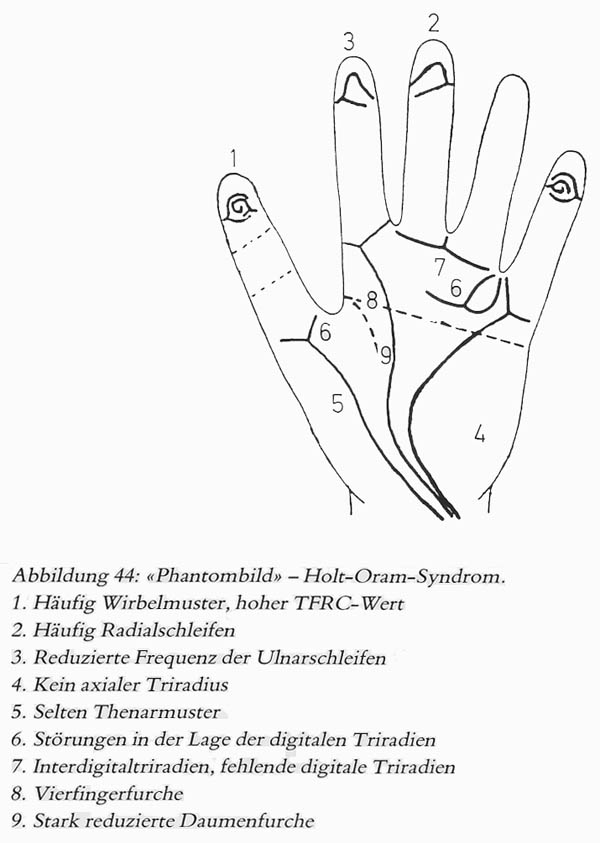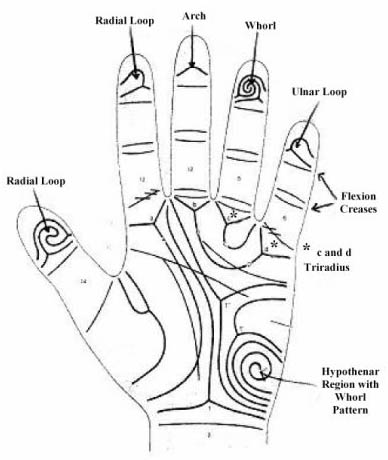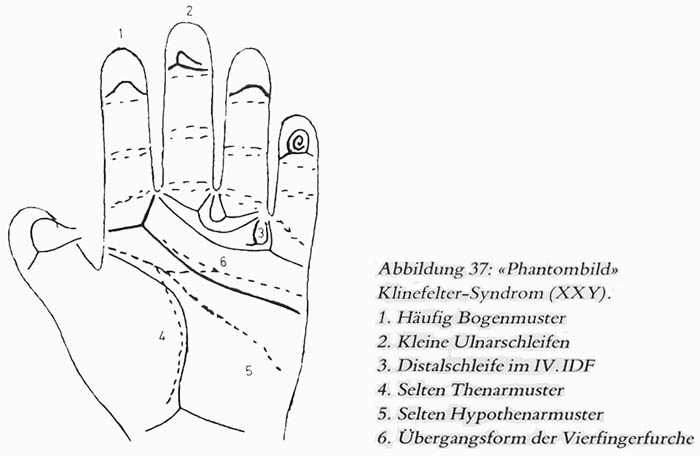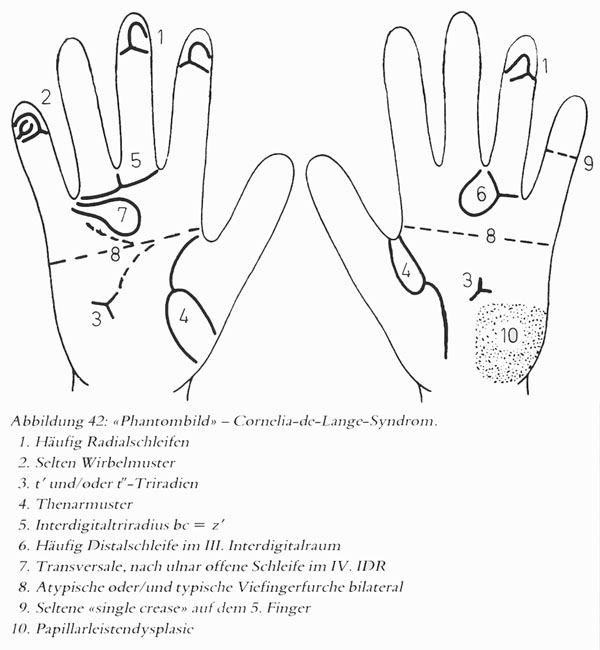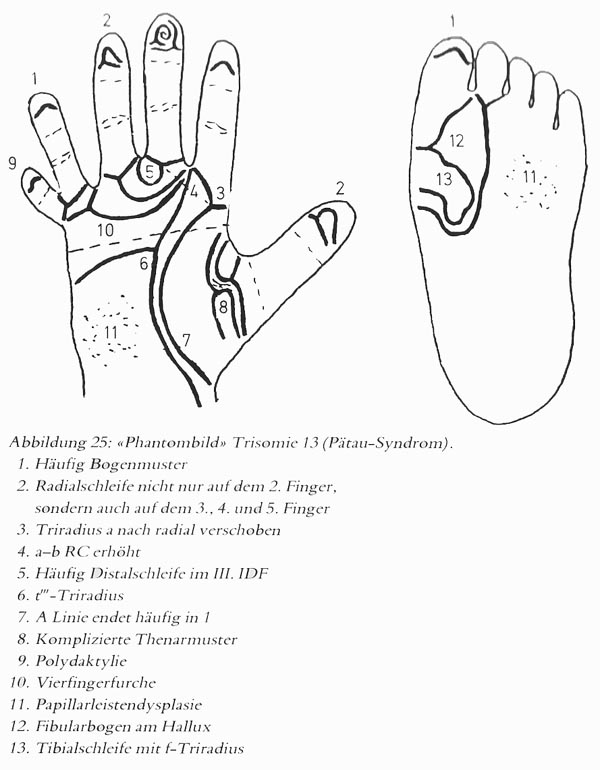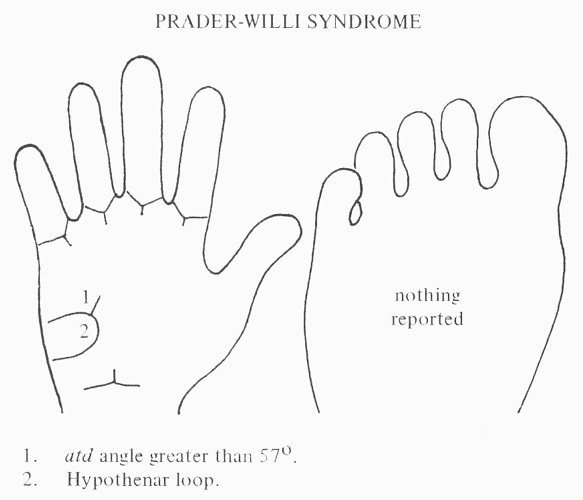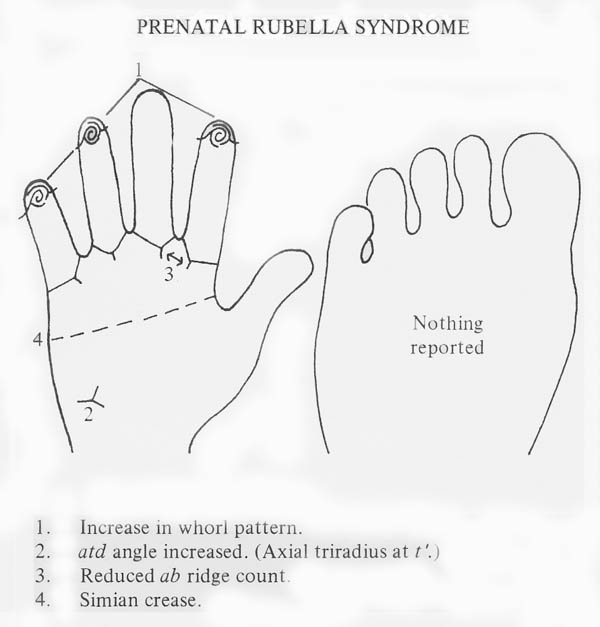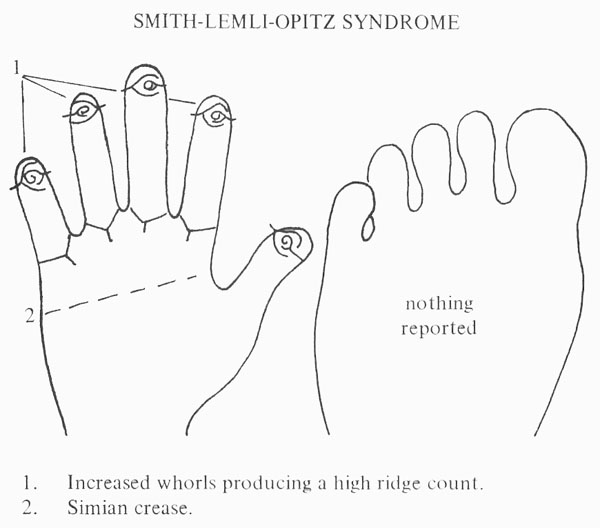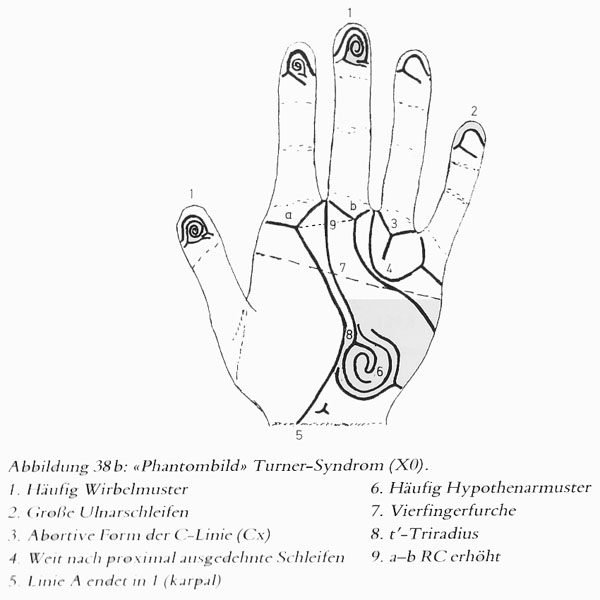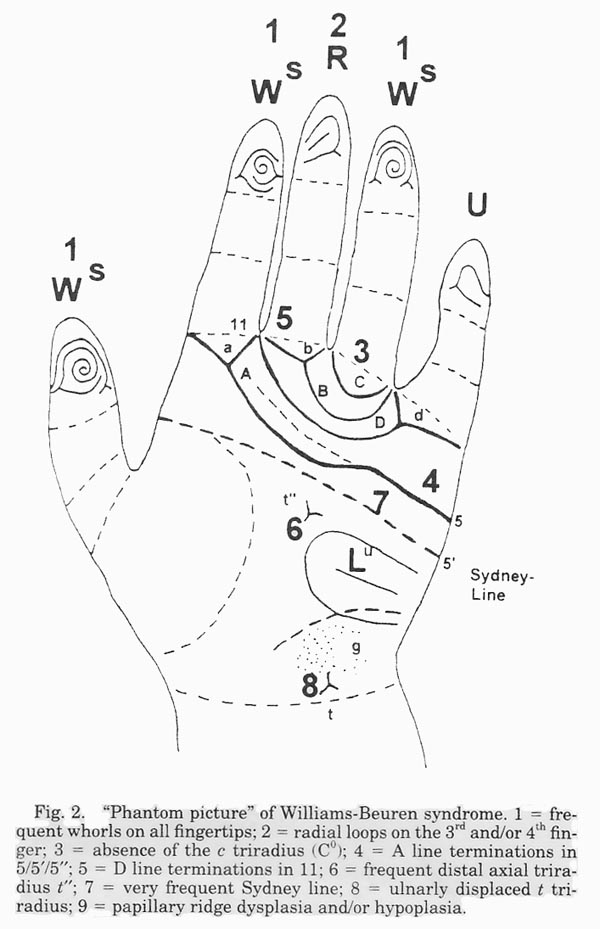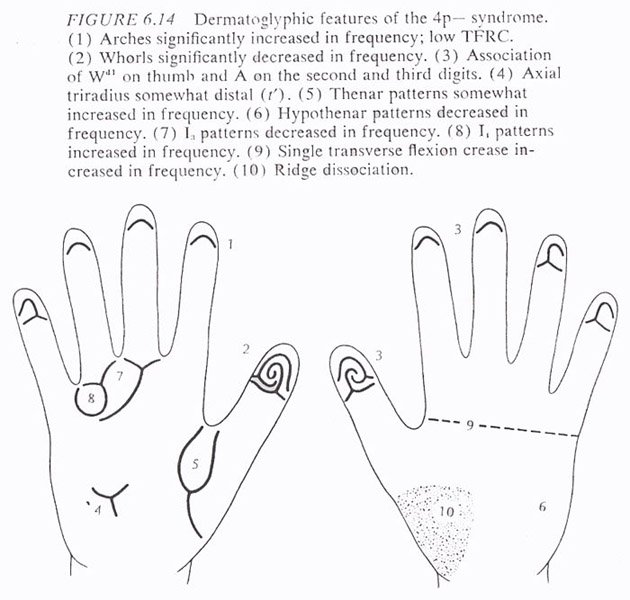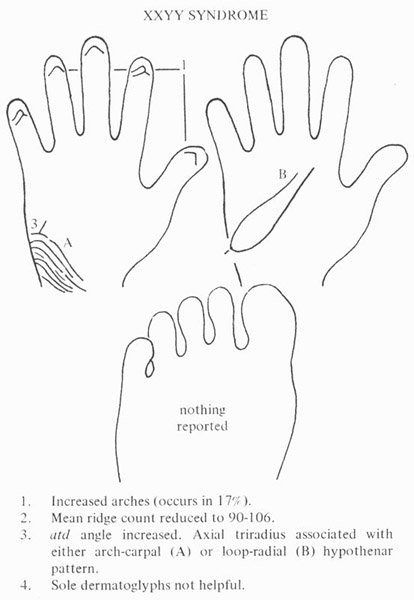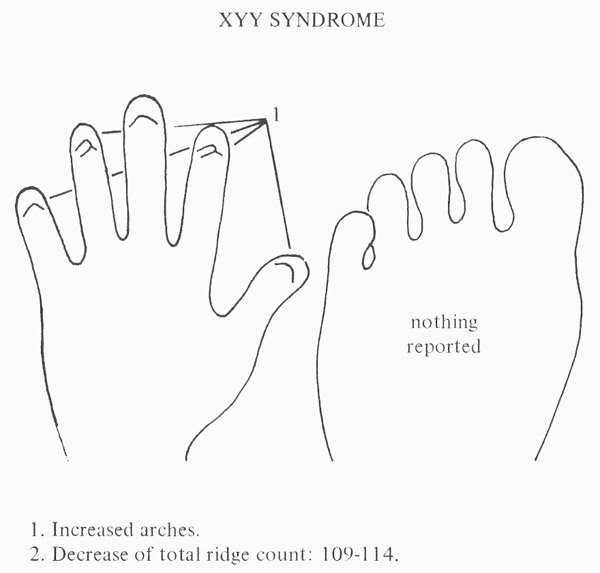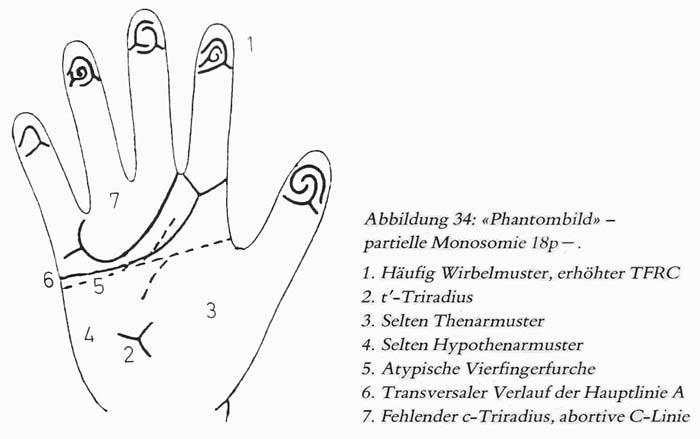
Scientific Hand Charts Collection:
fragile-X syndrome, a.k.a. Martin-Bell syndrome, Xq27.3
3 Hand Charts for Fragile-X syndrome!
Fragile-X (Xq27.3), a.k.a. Martin-Bell syndrome, is a genetic condition that causes a range of developmental problems including learning disabilities and cognitive impairment. Usually, males are more severely affected by this disorder than females.
Prevalence: fragile X affects 1 in 4,000 males and 1 in 6,000 females of all races and ethnic groups; about 1 in 259 women carry fragile X and could pass it to their children.
Quite a few detailed hand charts are available for fragile-X syndrome; most charts describe the significance of various typical features inside especially the dermatoglyphics, which manifest often combined with a simian line (= single transverse flexion crease) or Sydney line.
(The first hand chart below also illustrates the significance of various proportions of the hand size in fragile-X syndrome)
NOTICE: Individual hand features described below should not get associated in isolation with any theme; only combinations involving multiple hand levels have potential for diagnostic purposes.
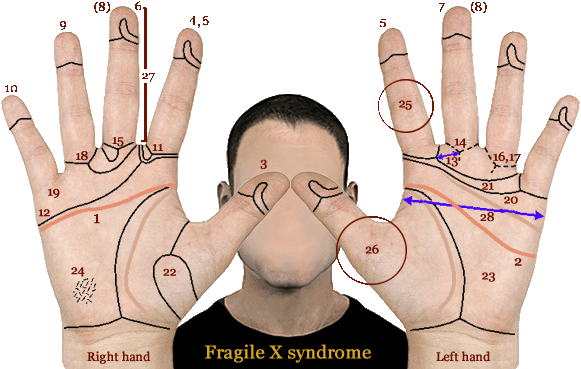
Fragile-X syndrome & the Hand: 36 Hand Signs! (2013);
author: M. van Mensvoort
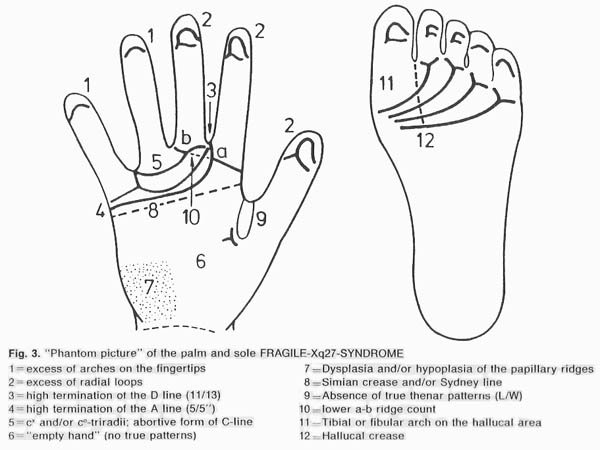
Dermatoglyphic peculiarities in families with X-linked mental retardation and fragile site Xq27: a collaborative study (1986), p.8; authors: A. Rodewald et al.
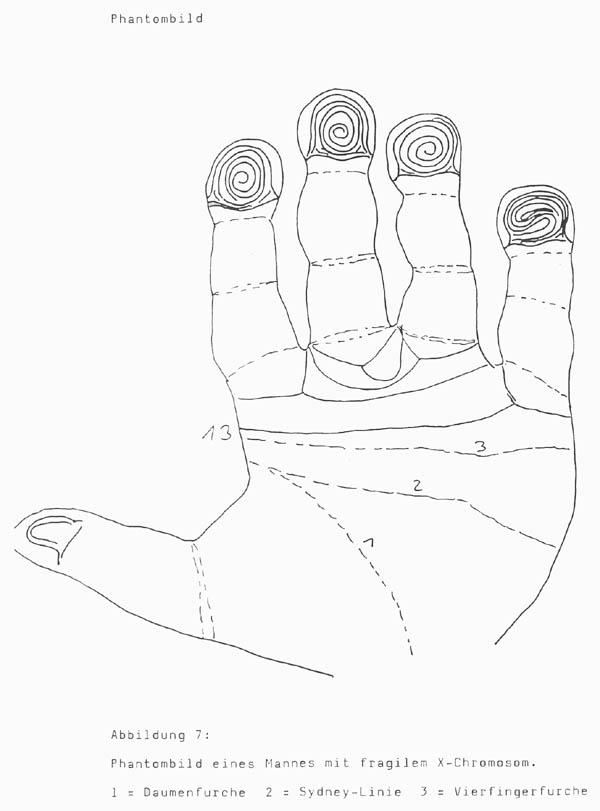
Dermatoglyphische Befunde bei Patienten mit fragilen X-Chromosom im Rahmen ihren klinischen Bildes (1985), p.37; author: M. Muller (dissertation study)
Other significant hand signs (not reported inside the hand charts):
Inside the first- and most detailed hand chart for fragile-X syndrome 28 hand signs are being reported; however the article where this hand chart is presented actually already describes 36+ hand signs in fragile-X syndrome, involving 8 out 9 levels of the hand.
All significant hand signs listed above for fragile-X syndrome together cover eight out of the nine perspectives of the hand as defined according Multi-Perspective Hand Reading (including hand level 1, 2, 3, 4, 5, 6, 8 & 9).
A summary of the most significant hand sign combinations in fragile-X syndrome is described here:
Decoding the language of the hand:
hand sign combinations in fragile-X syndrome!
are present below:
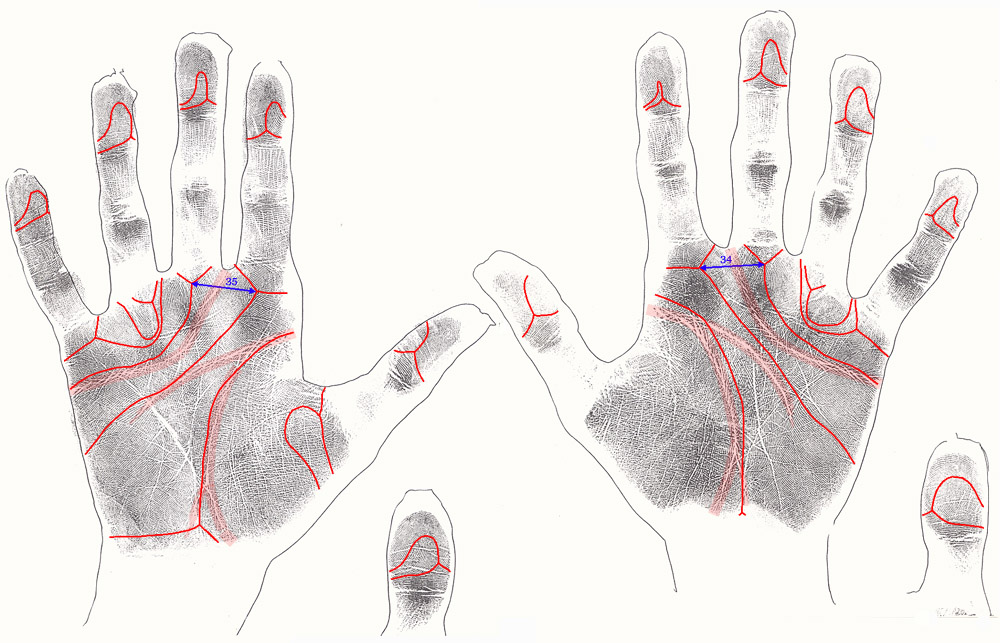
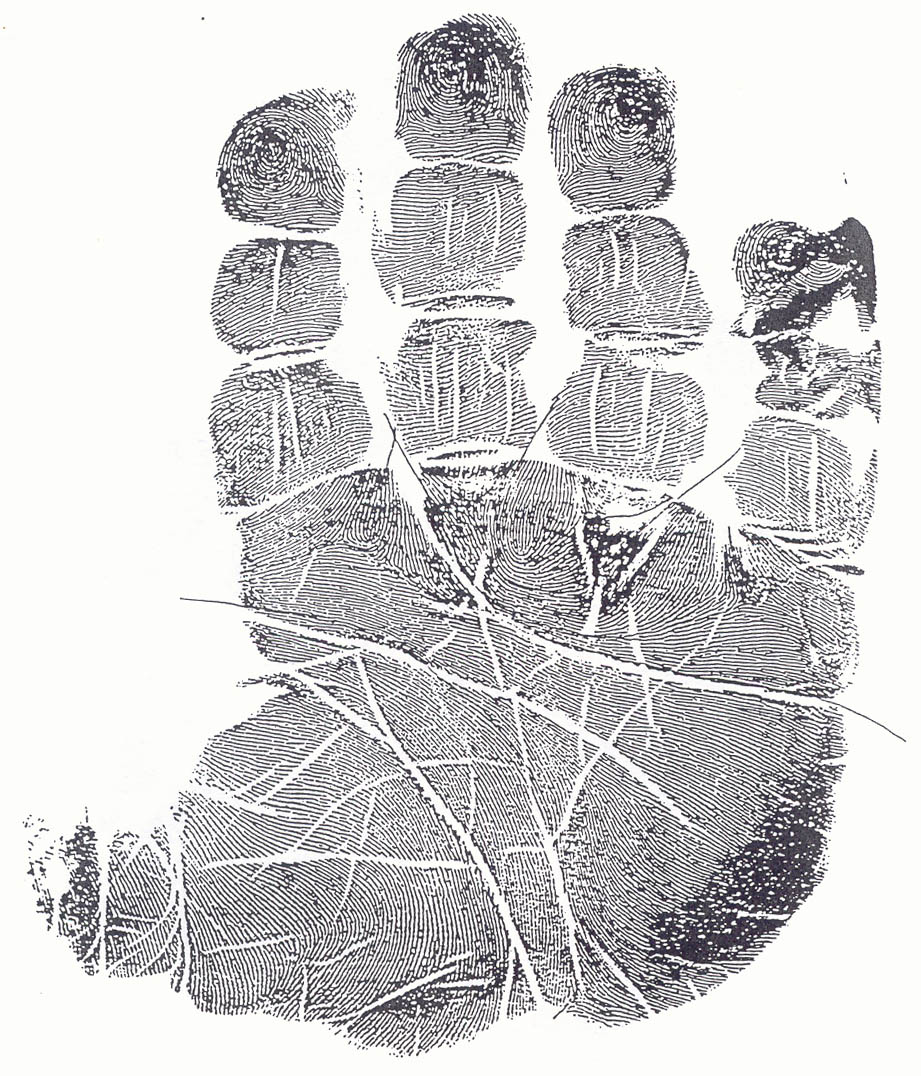
Hand charts are available for many other diagnostic issues;
start browsing HERE
![]() SCIENTIFIC HAND CHARTS: Introduction
SCIENTIFIC HAND CHARTS: Introduction
Hand charts for Big Five personality dimensions:
• Hand chart(s) for Agreeableness (2x: 1 in 4 people)
• Hand chart(s) for Conscientiousness (2x: 1 in 4 people)
• Hand chart(s) for Extraversion (2x: 1 in 4 people)
• Hand chart(s) Neuroticism (2x: 1 in 4 people)
• Hand chart(s) Openness (2x: 1 in 4 people)
Hand charts for diseases:
• Hand charts for hypercalcemia (1 in 4,000 people)
Hand charts for syndromes:
• Hand charts for arthrogryposis (1 in 10,000 people)
• Hand charts for cri-du-chat syndrome (1 in 30,000 people)
• Hand charts for Down syndrome (1 in 700 live births)
• Hand charts for Edwards syndrome (1 in 6,000 live births)
• Hand charts for fetal alcolhol syndrome (1 in 500 people)
• Hand charts for fragile-X syndrome (1 in 5,000 people)
• Hand charts for Holt-Oram syndrome (1 in 100,000 live b.)
• Hand charts for Kabuki syndrome (1 in 32,000 people)
• Hand charts for Klinefelter syndrome (1 in 1000 males)
• Hand charts for de Lange syndrome (1 in 15,000 live births)
• Hand charts for Marfan syndrome (1 in 5,000 people)
• Hand charts for Patau syndrome (1 in 15,000 live births)
• Hand charts for Prader-Willi syndrome (1 in 15,000 births)
• Hand charts for Rubella syndrome (1 in 100,000 people)
• Hand charts for Rubinstein syndrome (1 in 200,000 births)
• Hand charts for SLOS (1 in 40,000 births)
• Hand charts for Turner syndrome (1 in 2,000 female births)
• Hand charts for Warkany syndrome (1 in 200,000 births)
• Hand charts for Williams syndrome (1 in 14,000 births)
• Hand charts for Wolf-Hirschhorn syndrome (1 in 50,000 b.)
• Hand charts for XXYY syndrome (1 in 30,000 male births)
• Hand charts for XYY syndrome (1 in 1,000 male births)
• Hand charts for 18 deletion syndromes (2 in 40,000 live b.)
NOTICE: Reflexology hand charts are not included in this section because the scientific foundation of any of such charts is actually unknown; nevertheless, you can read more about the fundamentals of such charts HERE.
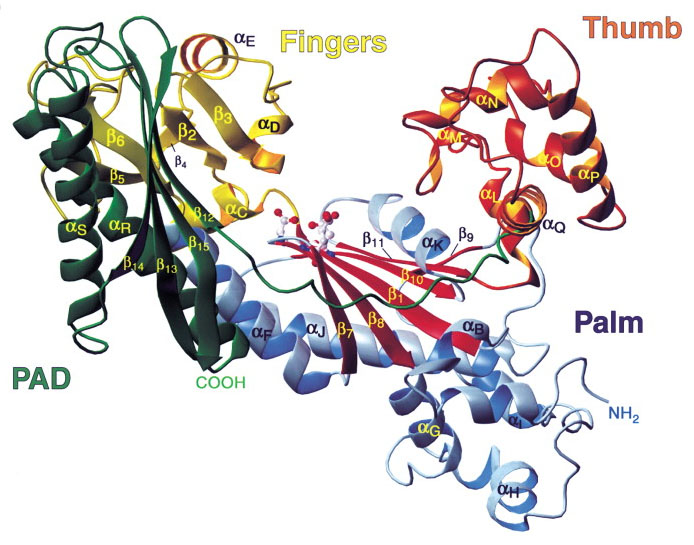
Other charts & maps:
• Fingerprints world map
• Hand reading experts world map
• Hand reflexology charts
